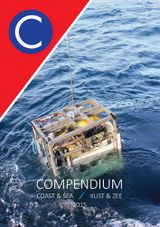|
|
| (94 intermediate revisions by 3 users not shown) |
| Line 1: |
Line 1: |
| − | ==Mangroves== | + | <div style="float:right; margin-left:10px; margin-top:5px">[[File:Compendiumcoastandsea.jpg|160px|right|link=Compendium for Coast and Sea - creating a marine science-policy interface]]</div> |
| − | | + | '''Compendium for Coast and Sea - creating a marine science-policy interface''' |
| − | [[image:mangrove thailand.jpg|right|thumb|300px|caption|Mangal in Thailand <ref>http://teqje.web-log.nl</ref>]] | + | <p style="margin-top:-15px"><br/></p> |
| − | | + | The Compendium for Coast and Sea is an integrated knowledge document about the socio-economic, environmental and institutional aspects of the coast and sea in Flanders and Belgium. As such, it constitutes a one-stop shop for data and information from the Flemish and Belgian marine and maritime research community and experts. The Compendium for Coast and Sea is an initiative of the Flanders Marine Institute (VLIZ) and was developed in close collaboration with experts from the research community, government, industry and civil society organisations. The first version of the Compendium was launched in 2013, a second edition was presented in 2015. |
| − | This article describes the [[habitat]] of the Mangrove forests. It is one of the sub-categories within the section dealing with biodiversity of [[marine habitats and ecosystems]]. It gives an overview about the characteristics, distribution, biota, functioning and adaptation to general problems the organisms are facing with. A short discussion about the threats is also present.
| + | </div> |
| − | | |
| − | Mangroves are the only trees that are capable of thriving in salt water. They form unique [[intertidal]] forests at the edge of land and sea. They are represented on all continents with tropical and subtropical coasts, i.e. North and South America, Africa and Middle-East, Asia and Oceania (incl. Australia). <ref name="vliz">http://www.vliz.be/vmdcdata/mangroves</ref>
| |
| − | | |
| − | Mangrove forests or '''mangals''' are a type of [[intertidal]] wetland [[ecosystems]]. The word mangrove is derived from the Portugese word mangue which means “tree” and the English word grove which is used for trees and shrubs that are found in shallow, sandy or [[mud]]dy areas. <ref>Karleskint G. 1998. Introduction to marine [[biology]]. Harcourt Brace College Publishers. p.378</ref> They replace [[Salt marsh]]es in tropical and subtropical regions.
| |
| − | They are salt-tolerant forested [[wetlands]] at the sea-land interface which forms the link between the terrestrial landscapes and the marine environment. The dominant plants are several species of mangrove (for a species overview, check the Mangrove Species Database <ref name="vliz"/>).
| |
| − | Mangroves are woody trees and shrubs with a thick, partially exposed network of roots that grow down from the branches into the water and sediment. They occur where there is little [[waves|wave action]] and where [[sediments]] accumulate. These fine grained (muddy and sandy) sediments lack oxygen. <ref>Hogarth P.J. 1999. The biology of mangroves. Oxford University Press. p.228</ref>
| |
| − | They are frequently associated with saline [[Lagoon|lagoons]] and are regularly found on protected sides of islands, [[Island atolls|atolls]] and tropical [[estuaries]]. <ref>Karleskint G. 1998. Introduction to marine biology. Harcourt Brace College Publishers. p.378</ref>
| |
Latest revision as of 14:52, 8 April 2016
Compendium for Coast and Sea - creating a marine science-policy interface
The Compendium for Coast and Sea is an integrated knowledge document about the socio-economic, environmental and institutional aspects of the coast and sea in Flanders and Belgium. As such, it constitutes a one-stop shop for data and information from the Flemish and Belgian marine and maritime research community and experts. The Compendium for Coast and Sea is an initiative of the Flanders Marine Institute (VLIZ) and was developed in close collaboration with experts from the research community, government, industry and civil society organisations. The first version of the Compendium was launched in 2013, a second edition was presented in 2015.
